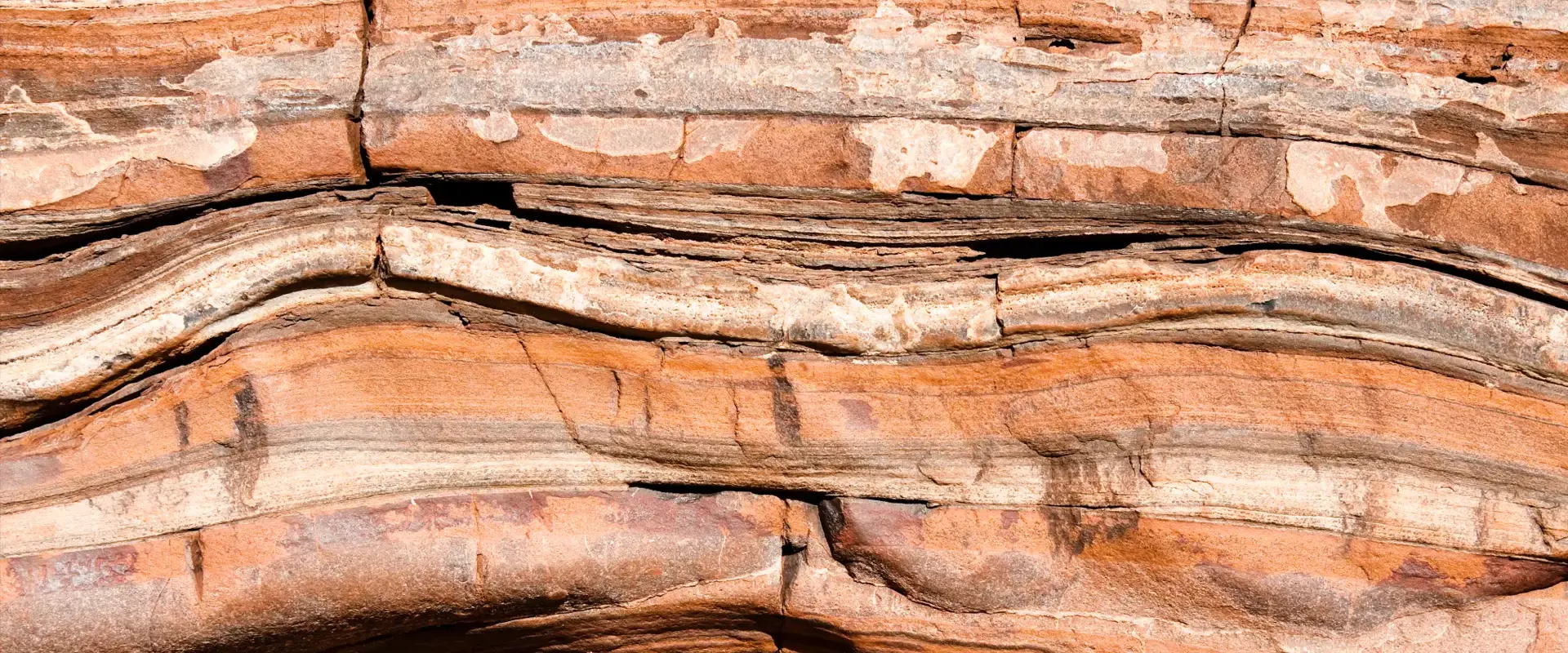
Cwm Idwal, Snowdonia, Wales

Part of the Snowdonia mountain range, the rocks of Cwm Idwal were deposited just over 450 million years ago in the Ordovician period. At this point in our history, North Wales was under an ocean, the Iapetus Ocean, evidenced by the presence of shell-bearing mud and siltstones in the rocks exposed in the area. But the plates were on the move and the Iapetus Ocean was closing. Between 449-458 million years ago, there was a period of underwater volcanism resulting in deposits formed by these highly explosive processes. This volcanism created an island arc where the oceanic plate was subducting beneath the continental plate. The sinking oceanic plate then began to partially melt as it sunk towards the mantle with the molten material produced migrating through the overlying plate and erupting to form sea-floor volcanoes. This period of subduction ultimately resulted in the collision of a continental plate that was once part of Canada with the plate where modern-day Scotland and North Wales were located. This event is called named the Caledonian Orogeny, a mountain building event that formed many of the mountains we see in Scotland and North Wales.
 |
|
| Boulders and scree at the base of the Pitt's Head Tuff: © Jonathan Wilkins |
In some areas of Snowdonia, the high rates of eruption laid down layers of rock thick enough for the volcanoes to surface from the ocean but this was not the case for Cwm Idwal; evidenced by beds of mudstone deposited between volcanic episodes. The rocks exposed at Cwm Idwal contain a number of deposits recording explosive volcanism, in the Pitts Head Tuff Formation, the Lower Rhyolitic Tuff Formation, and the Bedded Pyroclastic Formation. These volcanic rocks, and the shelly marine sediments interbedded within them, record a dramatic history of the interaction between explosive caldera volcanism and an ancient ocean. The Pitts Head Tuff Formation is well exposed in the lower western crags rising up across the ridge of Castell y Geifr to Y Garn.
By the early Devonian Period (~420 to 359 million years ago), the ancient continents of Laurentia and Avalonia had collided, in the end of the Caledonian Orogeny. This collision caused the rocks at Cwm Idwal to fold dramatically and the mudstones were metamorphosed producing the famous Welsh slate.
Fast forward to the last ice age, 1.6 million to 12,000 years ago, and glaciers had formed on the high altitude peaks of Snowdonia. Glaciers are one of the most erosive forces on bedrock and gouge deep valleys as they travel. Sometimes small glaciers will join up, feeding larger glacial systems, much like tributary rivers. Where this happens, small ‘hanging valleys’ are created high above the floor of the main valley. The word “Cym” is Welsh for valley, and Cwm Idwal is a striking example of a glacial hanging valley. The more recent, heather-covered mounds observed at Cwm Idwal are the geological remnants of the last glaciation. They are called moraines and formed as retreating glaciers deposit material that has been carried within the ice. From the top of Cwm Idwal the valleys show the paths the glaciers once took.
In 1831, Charles Darwin visited Cwm Idwal and observed that the large, scattered boulders at Llyn Idwal (the lake) contained marine seashells. He realised that the rocks must have formed within an ancient ocean and therefore had been uplifted to the surface at a later date by forces within the Earth’s crust: plate tectonics. Darwin later returned to the area and was one of the first to conclude that the landscape and moraines of Cwm Idwal had been formed by glaciers, at a time when Wales was far colder than today.
Further reading:
For more information about later events at Cwm Idwal, see the Geoscience Wales website
Twinned with: Mount Pinatubo
Mount Pinatubo in the Philippines is a modern day example of the highly explosive eruptions and deposits in a similar (but not exact) plate setting to that associated with Cwm Idwal. Mount Pinatubo is an active volcano found in the Zambales Mountains on the northern island of Luzon and is part...continue reading
Related Links
- Dan McKenzie Archive
- The Rock Cycle
- Plate Tectonics schools website
- Plate Tectonics Glossary
- Read about this site on the GeolSoc blog.
- 100 Great Geosites: Cwm Idwal and Darwin's Boulders
- Geoscientist: Rocks of Ages
| Back to main stories page > |
Other sites
- Twin: Windward Isles
Cwm Idwal
- Twin: Mount Pinatubo
Sperrin Mountains
- Twin: Sierra Nevada
Southern Uplands
- Twin: Nankai
Ben Arnaboll
- Twin: Glarus Thrust
Outer Isles
- Twin: Tohoku Earthquake
Clogherhead and Shannon
- Twin: Papua New Guinea
Cairngorms
- Twin: New Hampshire Granites
Great Glen Fault
- Twin: North Anatolian Fault
The Lizard
- Twin: Troodos Ophiolite
Yoredales
- Twin: Antarctica
Stanage Edge
- Twin: Ganges Delta
Hartland Quay
- Twin: Zagros Range
Amroth-Saundersfoot-Tenby
- Twin: Salt Range, Pakistan
Vale of Eden
- Twin: East African Rift Valley
Zechstein
- Twin: Sicily
Alderley Edge
- Twin: Navajo Sandstone
Isle of Skye
- Twin: Mount Kilimanjaro
Lulworth Cove
- Twin: Albania
Giant's Causeway
- Twin: Cascade du Ray Pic
